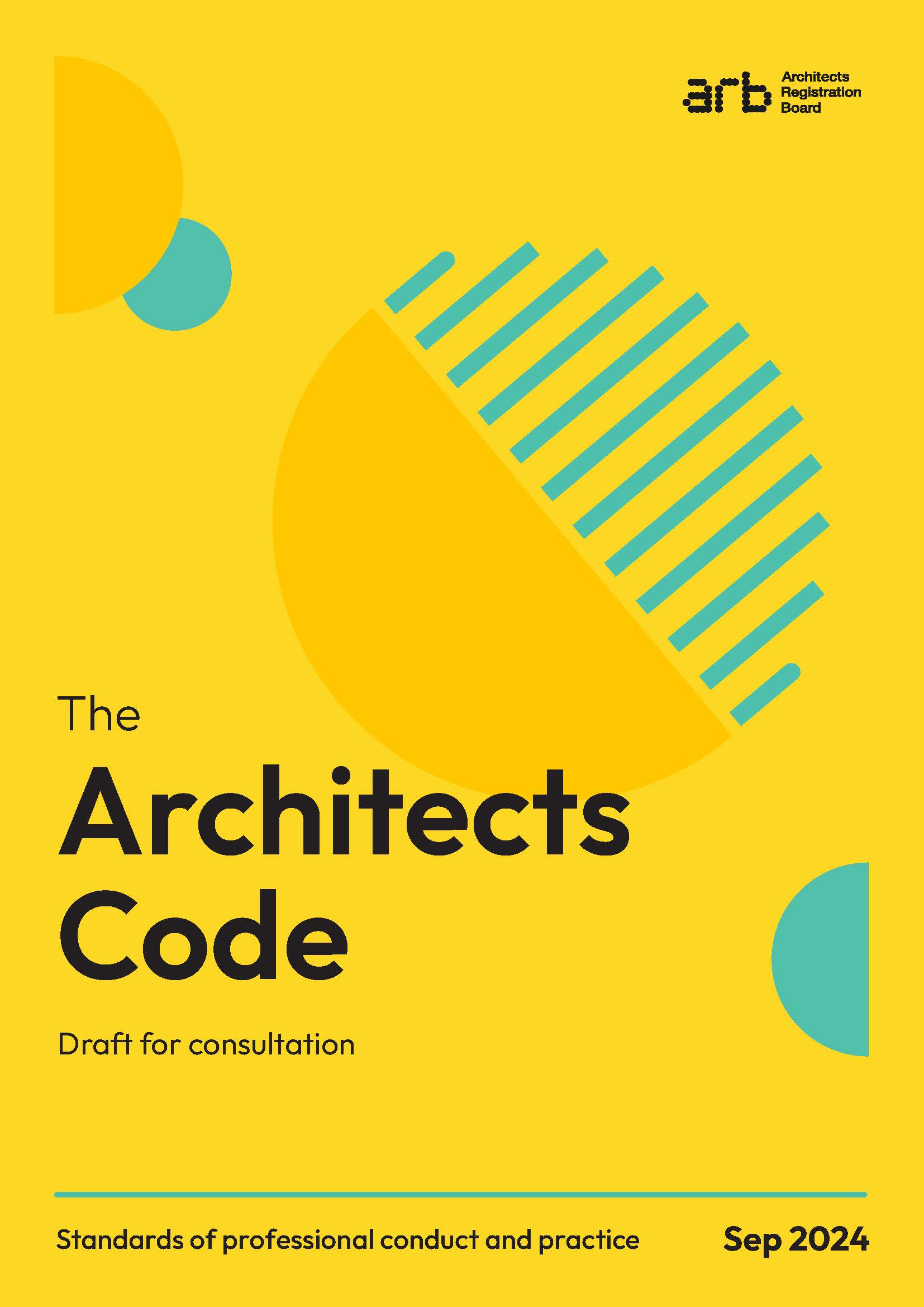Consultation on a new Code of Conduct and Practice for Architects
This consultation closed 12 December 2024.
ARB has published a draft version of a revised Code for consultation. The revised Code is designed to act as a positive statement of what professionalism and ethics mean to architects. It explains to the public, clients, and those who work with architects the behaviours and high standards they should expect from the profession. It has been drafted using published research on public expectations as to how architects should behave and act, and following engagement with architects and other professionals in the built environment.
The current edition of the Code was published in 2017, and this proposed revision is intended to address recent developments in building safety, environmental sustainability and inclusivity to ensure that the Code continues to be fit for practice.
The revised Code will be supported by a suite of guidance to give advice for how architects can meet the standards of the Code in specific situations and contexts.
This consultation seeks the views of architects, students, learning providers, clients, those who work with architects, and those who use the spaces that architects design.
The proposed Code contains six new standards:

Standard 1

Standard 2
Public interest

Standard 3

Standard 4
Professional practice

Standard 5

Standard 6
The proposed Code would be supported by a suite of guidance. The topics we are initially proposing are:
Professional indemnity insurance |
Guidance on the steps architects need to take to ensure their liabilities are covered by adequate and appropriate insurance. Guidance on this topic already exists and will be reviewed. |
Dealing with complaints and disputes |
Guidance on how architects should deal with complaints and disputes about their professional work. Guidance on this topic already exists and will be reviewed. |
Financial conduct |
Guidance on the standards architects should meet when dealing with professional or business finances. This would be a new guidance document that we’re proposing to introduce. |
Sustainability |
Guidance on how architects are expected to conduct themselves in respect of sustainability. Guidance on this topic already exists and will be reviewed. |
Terms of engagement |
Guidance on the contractual information architects should provide. This would be a new guidance document that we’re proposing to introduce. |
Raising concerns |
Guidance on how architects can whistleblow, or raise concerns about other individuals or work. This would be a new guidance document that we’re proposing to introduce. |
Building safety |
Guidance on how architects should approach designing buildings which are safe for others to use. Guidance on this topic already exists and will be reviewed. |
Equality, diversity and inclusion |
The approach architects should take to creating a culture that supports equality, diversity and inclusion within the architecture and built environment sector. This would be a new guidance document that we’re proposing to introduce. |
Managing conflicts of interest |
Guidance on how to recognise and manage conflicts of interest. This would be a new guidance document that we’re proposing to introduce. |
Mentoring |
Guidance for those with the responsibility for mentoring and supporting early career professionals. This would be a new guidance document that we’re proposing to introduce. |
Leadership |
Guidance for those architects who have the control and management of a practice, including the responsibility to supervise others. This would be a new guidance document that we’re proposing to introduce. |
Next steps
FAQs
Why is ARB reviewing the Code of Conduct?
The most recent edition of the Code was published in 2017, and we are now seeking to revise and update it so that it continues to be fit for purpose and so that it responds to specific challenges faced by architects today.
How has ARB developed the draft revised Code?
- independent research into the needs and expectations of the public and small-scale clients;
- feedback from architects in workshop discussions at a conference and online, and through one-to-one meetings with their national representative institutes; and
- feedback from other professionals who work with architects including large scale clients through one-to-one engagement meetings with representative organisations.


